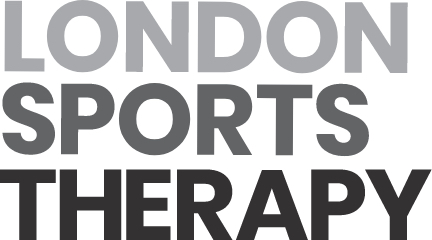Are you an athlete, or fitness/sports enthusiast struggling with shoulder discomfort? Or are you feeling pain in one or both of your shoulders when simply going about your daily tasks? A lot of our patients come to see us because of shoulder pain. If this is something that has been holding you back, affecting your performance in sports or exercise or simply in daily life, and has been stopping you from doing what you love, we can help.
But first, let’s take a look at what you may be feeling if you’re suffering from shoulder pain and what can be done to resolve it.
What does your shoulder pain feel like?
While we find that symptoms can vary in intensity and duration depending on the individual, the sports, exercise, or movement you engage in, and the underlying cause of the problem, here are some of the sensations you may be experiencing with shoulder pain.
- Persistent pain. Shoulder pain can manifest as a persistent aching or throbbing sensation in the shoulder joint, which may worsen with certain movements or activities.
- Limited range of motion. You may not feel any pain, as such, but perhaps you find it difficult to move your shoulder freely or to reach certain positions due to stiffness or discomfort.
- Weakness or instability. Rather than excruciating pain, you may have noticed weakness or instability in the affected shoulder. And this makes it challenging to perform tasks that require strength or balance.
- Swelling and inflammation. Inflammation is often associated with shoulder pain, leading to noticeable swelling around the affected area.
- Radiating pain. Shoulder pain can easily radiate to other areas of the body, such as the neck, upper arm, or even down to the fingertips. This can be accompanied by tingling or numbness in these regions.
If you are experiencing any of the above, we strongly recommend you seek a professional assessment and diagnosis to determine the best course of action. Early intervention will most likely determine a better outcome for you.
What are some of the causes of shoulder pain?
Shoulder pain can be caused by several factors. Common causes that we see in our patients at the clinic include:
- Injuries. Falls or accidents can easily lead to fractures, dislocations, or sprains.
- Overuse of the shoulder joint. Repetitive motions can strain your tendons and muscles, causing pain.
- Degenerative conditions gradually wear down the protective cartilage of the joint. Examples of these are osteoarthritis and rheumatoid arthritis.
On top of these common causes, specific conditions may also lead to shoulder pain. For example:
- Rotator cuff tears. Here, the tendons that connect the muscles to the shoulder joint tear partially or completely. This can be due to injury or degeneration over time.
- Frozen shoulder (also known as adhesive capsulitis) is a condition that causes stiffness and pain in the shoulder joint and usually develops gradually.
- Tendonitis is an inflammation of the tendons that may cause pain only when certain movements are performed.
But a lot of the time, shoulder pain occurs in patients without any clear indication of injury, overuse, or a specific condition. This is when we look at other factors (often lifestyle-related and occupational), such as poor posture, muscle imbalances, daily activities (exercise-related or otherwise), old injuries, or even stress.
Identifying the underlying cause of your shoulder pain is crucial for us to be able to determine effective treatment and recommend the appropriate management strategies.
What are some of the treatments for shoulder pain?
We recognise how much shoulder pain can significantly impact your quality of life – from your daily activities to the way you’re able to practise the sports or activities you love.
Most of the time, we can help with non-surgical interventions such as adjustments and manipulations and targeted exercises that we recommend you do at home to relieve pain and restore shoulder function.
Surgical interventions (such as arthroscopic surgery or rotator cuff repair) are outside of our remit but are sometimes required in more severe and chronic cases. And if that’s you, we’ll be able to advise you and support you before and after your surgery to help you achieve long-term healing.
Here are some of the ways we can help.
Rehabilitation and recovery
Rehabilitation and recovery play a crucial role in restoring shoulder function. This is why we are with you every step of the way as you go through a tailored rehabilitation programme to promote healing, improve strength, and increase your range of motion. We’ll also assist you in progressively returning to your usual activities or sports – we want your transition back to your everyday tasks, activities, or sports to be safe and gradual.
Prevention and maintenance
To help maintain overall strength and flexibility, we may recommend specific exercises (such as shoulder presses or rows) to provide stability and prevent further shoulder injuries.
Lifestyle modifications
Practising proper posture and considering ergonomic factors are also key. Maintaining good alignment (both at work and during sports or leisure activities) can significantly reduce the risk of developing shoulder pain. If you practise a particular sport, we’ll work with you to come up with a personalised set of exercises to strengthen the muscles required for that activity and avoid overloading the shoulders incorrectly or too soon.
Above all, we want you to stay pain-free. So we work with you through education and advice on minimising the risk of reinjury and optimising your long-term shoulder health.

Shoulder pain Case Studies
To bring this all to life, we thought we’d share a few case studies from some of our lovely clients. You can see them more in detail on our Instagram. Real names have been changed to protect our patients’ privacy.
Sam’s Case Study
Sam came to see us because he was experiencing shoulder pain during calisthenics workouts, and particularly while performing pulling motions. During our assessment, we noticed that his left shoulder was in an incorrect position. We were able to identify that this was due to an old left ankle injury that, over time, had caused non-optimal loading of his shoulder. In other words, his rotator cuff muscles weren’t working in unison. As a result, a specific part of the shoulder (the anterior capsule) would dominate and cause pain in Tom’s bicep tendon.
Would you have thought that someone’s shoulder pain could come from an old ankle injury?! You’d be surprised, but it’s more common than you think.
Here’s a similar scenario…
John’s Case Study
Our lovely client John came to see us to shed some light (and find a solution) to his right shoulder and lower back pain. John is a keen Olympic weightlifter and cross-fitter. During our assessment, we asked him to perform some of the exercises he’d typically practise during his workout routines.
When watching him move, it became clear that the right side of his body was overworked. This was due to the instability of his left first ray (the first metatarsal bone and its corresponding joint, which is the joint of the big toe). The first ray plays a significant role in the function and stability of the foot. Its proper alignment and movement are crucial for maintaining balance, walking, and overall foot health. John had even been using specialised footwear, but that didn’t help stabilise his left foot. As a result, John was continuously overusing his right side, and that’s what eventually started causing pain in his shoulder and back.
With the root of the issues correctly identified, we were able to provide John with the right stability exercises to get him back to his favourite sports – pain-free!
Lara’s case study
Lara came to see us after experiencing shoulder pain that wouldn’t improve despite performing a range of exercises to strengthen and stabilise the rotator cuff.
What else could be causing her shoulder pain? In Lara’s case, we noticed that the pain was originating from her back. After all, the shoulder blade is connected to it! Once again, we were able to identify the true cause of Lara’s shoulder pain and provide her with a tailored plan to get rid of it.
Would you like our help to address your shoulder pain?
These are only a handful of the success stories we have to share. If you’re experiencing shoulder pain when going through daily tasks or performing specific activities or sports, don’t suffer alone! Never ignore your pain and continue to train or exercise regardless. We can help! Getting rid of your shoulder pain may be easier (and not as painful) as you think. Why don’t you pop in to see us at the clinic? You can book an appointment here.

